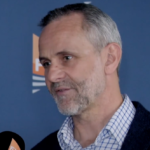Adopting a ‘distributed aviation’ model built on sustainable foundations that focuses on regional connectivity over traditional hub and spoke operations means “everybody wins”, according to Darrell Swanson, Director of Swanson Aviation.
Swanson, whose consultancy provides advisory services on airport and aviation infrastructure including electric aircraft, published a paper last year examining distributed aviation as a new economic model for electric aviation.
Hub and spoke
Under this scenario, sub-regional traffic is envisaged to be distributed away from the current hub and spoke system of airports to secondary and smaller airports.
Swanson said: “Everybody wins with this model. You start getting electric aircraft services from smaller airfields that are actually closer to passengers origins and destinations, so they win because they are not having to travel for miles and miles to a big hub airport.
“The environment wins because they are on aircraft that are operating electrically. The small airports win because they are getting much needed traffic that they wouldn’t otherwise have.
“Big airports … gain because they are getting very valuable runway slots back to them which they can put onto long haul international routes. Everybody wins in a distributed aviation circle.”
Infrastructure bottleneck
However Swanson warned that infrastructure remained the “secret bottleneck” putting the brakes on progress in the electric aviation field.
He said: “Unless we can solve the infrastructure equation, we are going to have a lot of vehicles in the air and they just can’t land anywhere, so we may as well go home. We still have that to sort out.
“But the FAA, EASA and the CAA are really making progress in terms of putting in the right pathways in legislation and rules to allow for certification of the vehicles, but also for future vertiports. We just need the government to catch up in terms of the planning legislation.”
New UK routes
Swanson has also been working on viability assessments for new regional routes across the UK.
He and his team have looked at 20 potential routes, 14 with fixed wing aircraft and six with eVTOL vehicles, that Swanson said would require 244 new aircraft.
Subscribe to the FINN weekly newsletter

